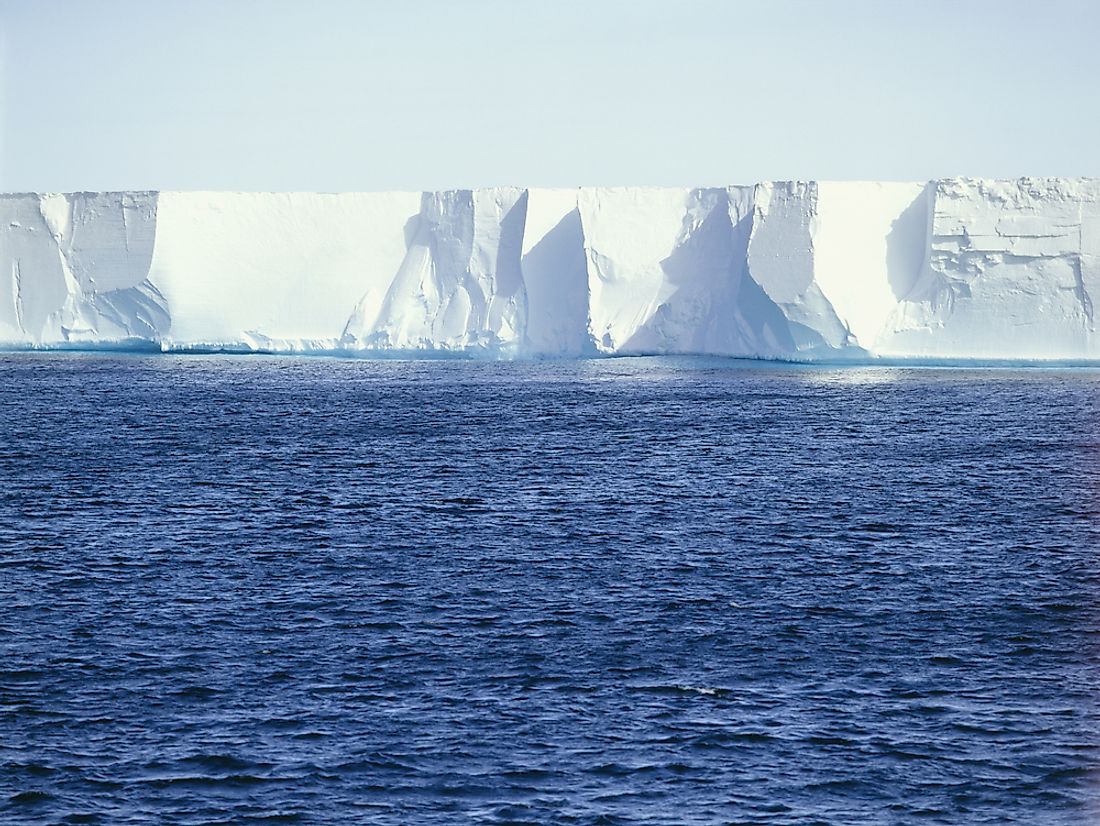What Are The Differences Between An Ice Shelf And Shelf Ice?

Ice shelf and shelf ice are two different geographical features, which appear to refer to the same thing. Mixing up the two is easy. However, the two have significant differences ranging from their formation, structure, location, and stability.
Location
Ice shelves are found in the polar regions of the world including Canada, the Russian Arctic, Antarctica, and Greenland where the atmospheric temperatures are below an average of -9°C annually. Shelf ice, on the other hand, is found inland on open lakes, especially in the Great Lakes. Some of the lakes with shelf ice include Lake St. Clair, Lake Erie, and on Lake Ontario.
Structure
Ice shelves are huge platforms of floating ice that extend to a minimum height of 100m and a maximum height of 2000m. Ice shelves are grounded on the seaward edge. Shelf ice, on the other hand, is formed as a floating ice on the surface of a lake. The floating mass contains smaller chunks of ice pushed by waves to one another forming a ridge. These chunks of ice create a structure with varied thickness, density, and depth. Shelf ice is thinner and smaller than ice shelf. Shelf ice occupies smaller areas compared to ice shelves.
Formation
Shelf ice is formed on relatively smaller water bodies such as lakes, and forms when surface water on the lake freezes due to wave action to create snow ridges.Due to the constant wave action, shelf ice is often coated with a layer of sand on its top. In some cases when the lake remains calm for a long time, the entire surface is covered by shelf ice. However, freezing of the entire lake is rare since it does not remain calm for extended periods. Ice shelves, on the other hand, are formed from glacial accumulation, surface accumulation of snow and bottom freezing from ocean water.
Stability
Ice shelves are stable compared to shelf ice. Ice shelves form as a result of the accumulation of huge masses of ice, which create pressure on the ice shelf eliminating areas of weakness such as air pockets. Shelf ice, on the other hand, appears to be solid but is highly unstable. The presence of moving water beneath the shelf ice melts the bottom creating zones of weaknesses. The shelf ice may break apart on these weak areas. Further action by waves reduces the stability of the shelf ice further. People visiting the great lakes in the US are warned against walking on the ice shelf due to the risk. Ice shelves are also much longer lasting than shelf ice. Ice shelves have been around for years while shelf ice forms mainly during the winter season when temperatures drop. The shelf ice may sometimes become embedded on the lake bottom or the shore making it stable.











